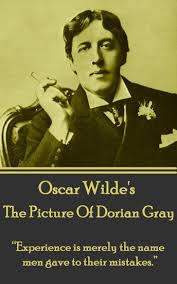The Picture of Dorian Gray
by Oscar Wilde
1891
3 DECEMBER 2015
I know I don’t normally write about the publication history of the books I review, but the background to this one is more complex than usual, and quite relevant. It was published in full in Lippincott’s Monthly magazine in 1890 (in a significantly shorter version than the final novel). Wilde predicted “I think it will make a sensation” – which was a bit of an understatement. Prior to publication he made several edits to remove some of the more explicitly homo-erotic content, but he may as well not have bothered, because critics almost unanimously put two and two together, identified Wilde with his two main characters, and realised that some of the sins which they explore included gay sex. For the avoidance of any doubts Wilde drops clunking hints such as when he says “there are certain temperaments that marriage makes more complex…they are forced to have more than one life” (61) What can he mean? Later he refers to “such love as Michael Angelo had known, and Montaigne, and Winckelmann, and Shakespeare himself” (96). This was extraordinarily daring of Wilde – and his publishers – and he was of course to pay the price.
 The plot is very familiar. Gorgeous, young, well-to-do and well-connected Dorian Gray has his portrait painted by a society painter, Basil Hallward. Dorian unknowingly makes a Mephistophilian pact to preserve his beauty, and for his portrait to bear the signs of aging and sin. He is taken in hand, and led astray, by Hallward’s friend, the dangerous Lord Henry Wotton. His treatment of a young actress, Sibyl Vane, who falls in love with him and who he brutally rejects, leading to her suicide, is the first time he notices a change in the painting. Gray is psychopathically narcissistic – everything is judged by its impact on him. He goes to the opera after hearing Sibyl has died, and when chastised for this says “Don’t talk about horrid subjects. If one doesn’t talk about a thing, it has never happened” (87) Accepting his fate, he hides the painting, eventually killing Hallward to avoid exposure, and dives into a life of excess, sin, and hedonism. Wilde goes as far as he can to describe this life, dropping hints about many of the elements, including some more conventional, heterosexual affairs, which frankly is fooling no-one.
The plot is very familiar. Gorgeous, young, well-to-do and well-connected Dorian Gray has his portrait painted by a society painter, Basil Hallward. Dorian unknowingly makes a Mephistophilian pact to preserve his beauty, and for his portrait to bear the signs of aging and sin. He is taken in hand, and led astray, by Hallward’s friend, the dangerous Lord Henry Wotton. His treatment of a young actress, Sibyl Vane, who falls in love with him and who he brutally rejects, leading to her suicide, is the first time he notices a change in the painting. Gray is psychopathically narcissistic – everything is judged by its impact on him. He goes to the opera after hearing Sibyl has died, and when chastised for this says “Don’t talk about horrid subjects. If one doesn’t talk about a thing, it has never happened” (87) Accepting his fate, he hides the painting, eventually killing Hallward to avoid exposure, and dives into a life of excess, sin, and hedonism. Wilde goes as far as he can to describe this life, dropping hints about many of the elements, including some more conventional, heterosexual affairs, which frankly is fooling no-one. |
| Oscar Wilde |



No comments:
Post a Comment